GRAPHING ROTATIONS WORKSHEET
Subscribe to our ▶️ YouTube channel 🔴 for the latest videos, updates, and tips.
Problem 1 :
The triangle XYZ has the following vertices X(0, 0), Y(2, 0) and Z(2, 4). Rotate the triangle XYZ 90° counterclockwise about the origin.
Problem 2 :
The triangle PQR has the following vertices P(0, 0), Q(-2, 3) and R(2,3). Rotate the triangle PQR 90° clockwise about the origin.
Problem 3 :
A quadrilateral has the following vertices A(0, 0), B(1, 2), C(4, 2) and D(3, 0). Rotate the quadrilateral 180° clockwise about the origin.
Problem 4 :
The triangle XYZ has the following vertices X(0, 0), Y(2, 0) and Z(2, 4). Rotate the triangle XYZ 270° counterclockwise about the origin.

1. Answer :
Step 1 :
Trace triangle XYZ and the x- and y-axes onto a piece of paper.
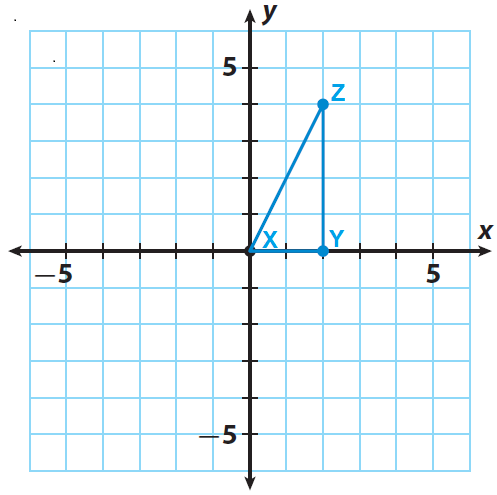
Step 2 :
Let X', Y' and Z' be the vertices of the rotated figure.
Since the triangle is rotated 90° counterclockwise about the origin, the rule is
(x, y) ----> (-y, x)
Step 3 :
X(0, 0) ----> X'(0, 0)
Y(2, 0) ----> Y'(0, 2)
Z(2, 4) ----> Z'(-4, 2)
Step 4 :
Sketch the image X'Y'Z' using the points X'(0, 0), Y'(0, 2) and Z'(-4, 2).
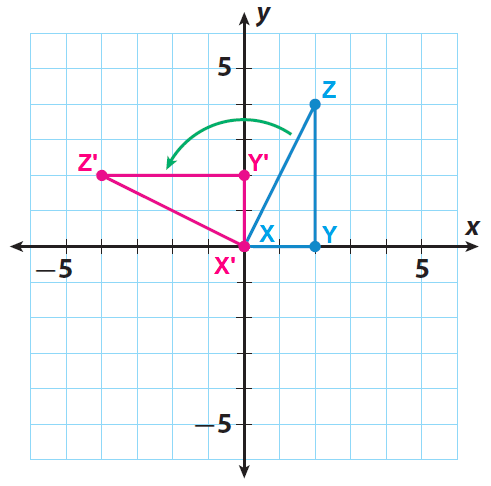
2. Answer :
Step 1 :
Trace triangle PQR and the x- and y-axes onto a piece of paper.
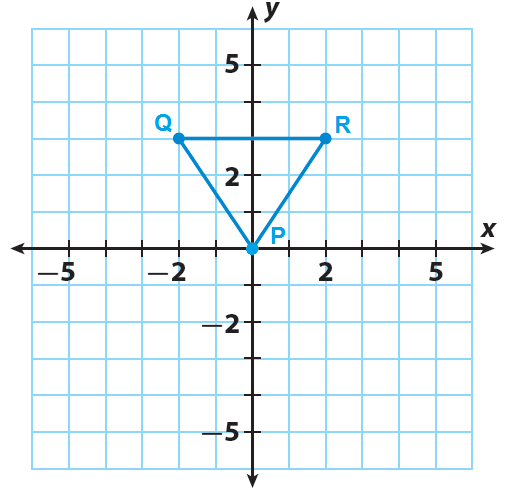
Step 2 :
Let P', Q' and R' be the vertices of the rotated figure.
Since the triangle is rotated 90° clockwise about the origin, the rule is
(x, y) ----> (y, -x)
Step 3 :
P(0, 0) ----> P'(0, 0)
Q(-2, 3) ----> Q'(3, 2)
R(2, 3) ----> R'(3, -2)
Step 4 :
Sketch the image P'Q'R' using the points P'(0, 0), Q'(3, 2) and Z'(3, -2).
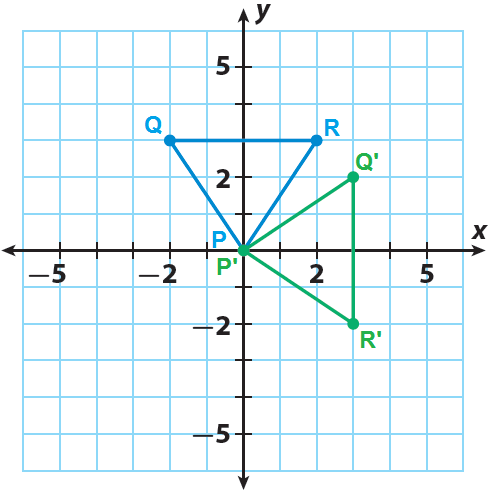
3. Answer :
Step 1 :
Trace the quadrilateral ABCD and the x- and y-axes onto a piece of paper.
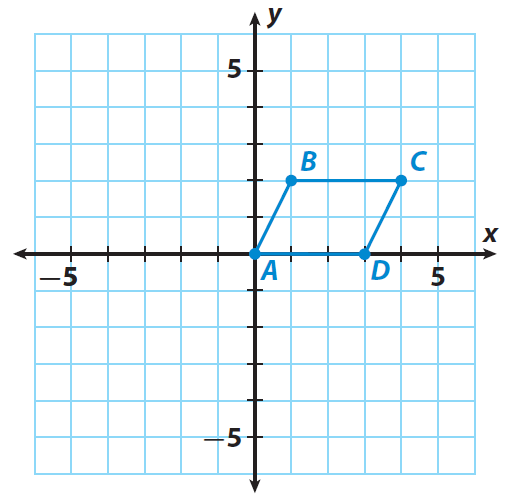
Step 2 :
Let A', B', C' and D' be the vertices of the rotated figure.
Since the quadrilateral is rotated 180° clockwise about the origin, the rule is
(x, y) ----> (-x, -y)
Step 3 :
A(0, 0) ----> A'(0, 0)
B(1, 2) ----> B'(-1, -2)
C(4, 2) ----> C'(-4, -2)
D(3, 0) ----> D'(-3, 0)
Step 4 :
Sketch the image A'B'C'D' using the points A'(0, 0), B'(-1, -2), C(-4, -2) and D'(-3, 0).
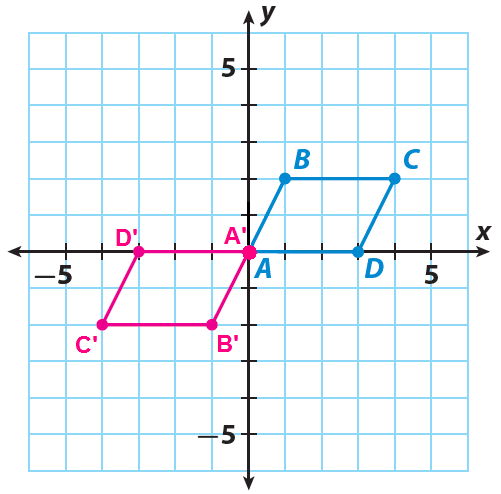
4. Answer :
Step 1 :
Trace triangle XYZ and the x- and y-axes onto a piece of paper.

Step 2 :
Let X", Y" and Z" be the vertices of the rotated figure.
Since the triangle is rotated 270° counterclockwise about the origin, the rule is
(x, y) ----> (y, -x)
Step 3 :
X(0, 0) ----> X"(0, 0)
Y(2, 0) ----> Y"(0, -2)
Z(2, 4) ----> Z"(4, -2)
Step 4 :
Sketch the image X"Y"Z" using the points X"(0, 0), Y"(0, -2) and Z"(4, -2).
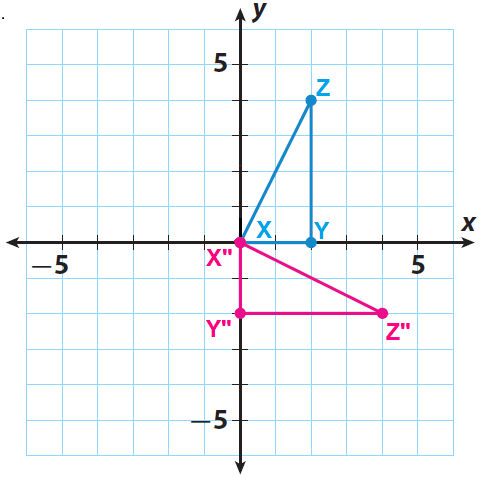
Subscribe to our ▶️ YouTube channel 🔴 for the latest videos, updates, and tips.
Kindly mail your feedback to v4formath@gmail.com
We always appreciate your feedback.
About Us | Contact Us | Privacy Policy
©All rights reserved. onlinemath4all.com

Recent Articles
-
US Common Core K-12 Curricum Algebra Solving Simple Equations
Jan 07, 26 01:53 PM
US Common Core K-12 Curricum Algebra Solving Simple Equations -
10 Hard SAT Math Questions (Part - 4)
Jan 05, 26 06:56 PM
10 Hard SAT Math Questions (Part - 4) -
10 Hard SAT Math Questions (Part - 3)
Jan 05, 26 06:34 PM
10 Hard SAT Math Questions (Part - 3)

